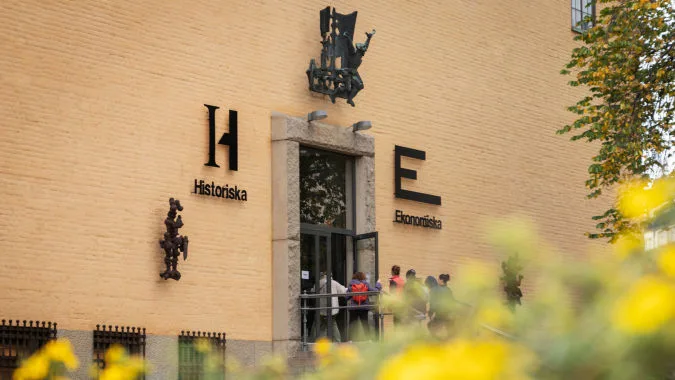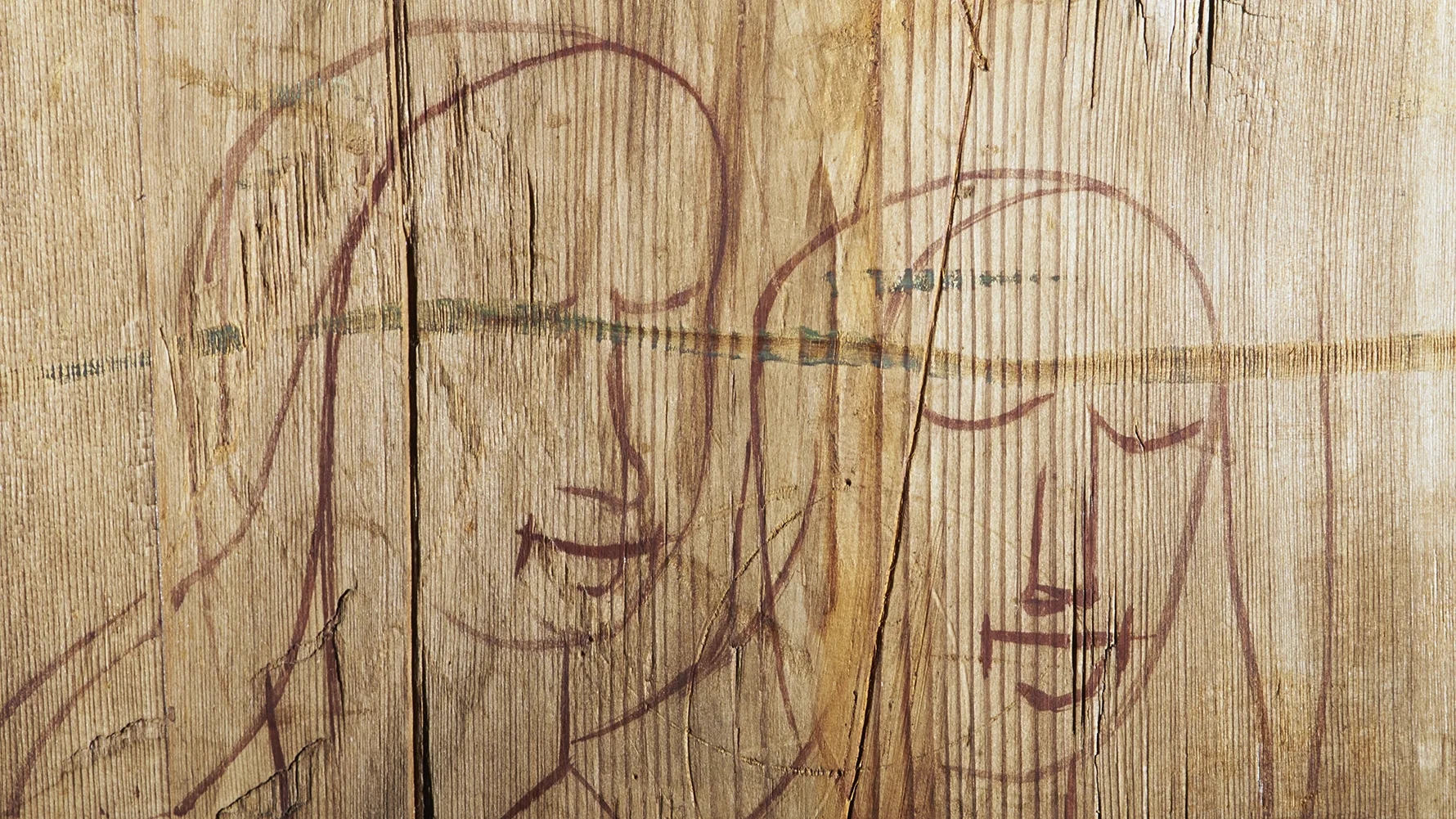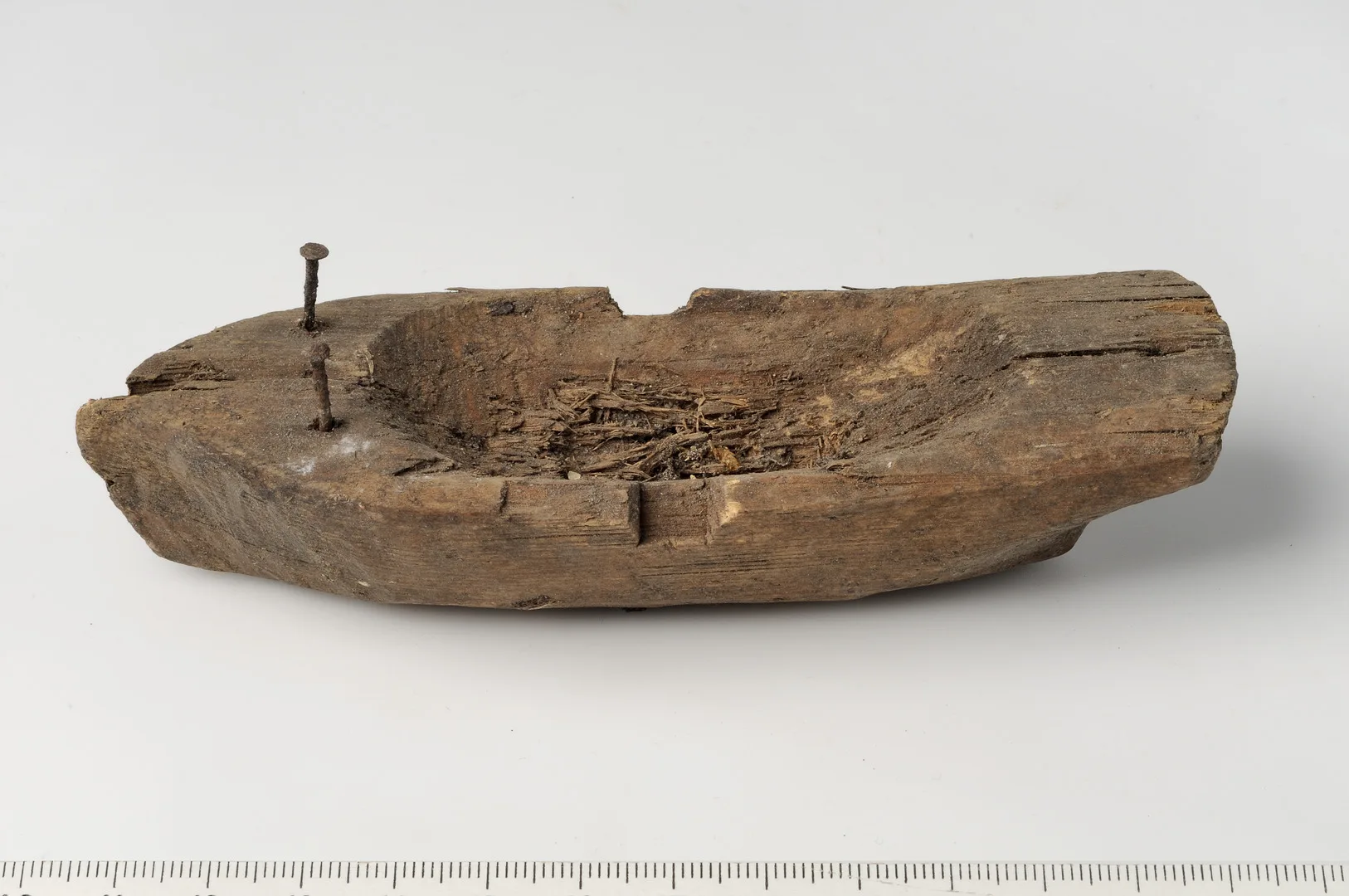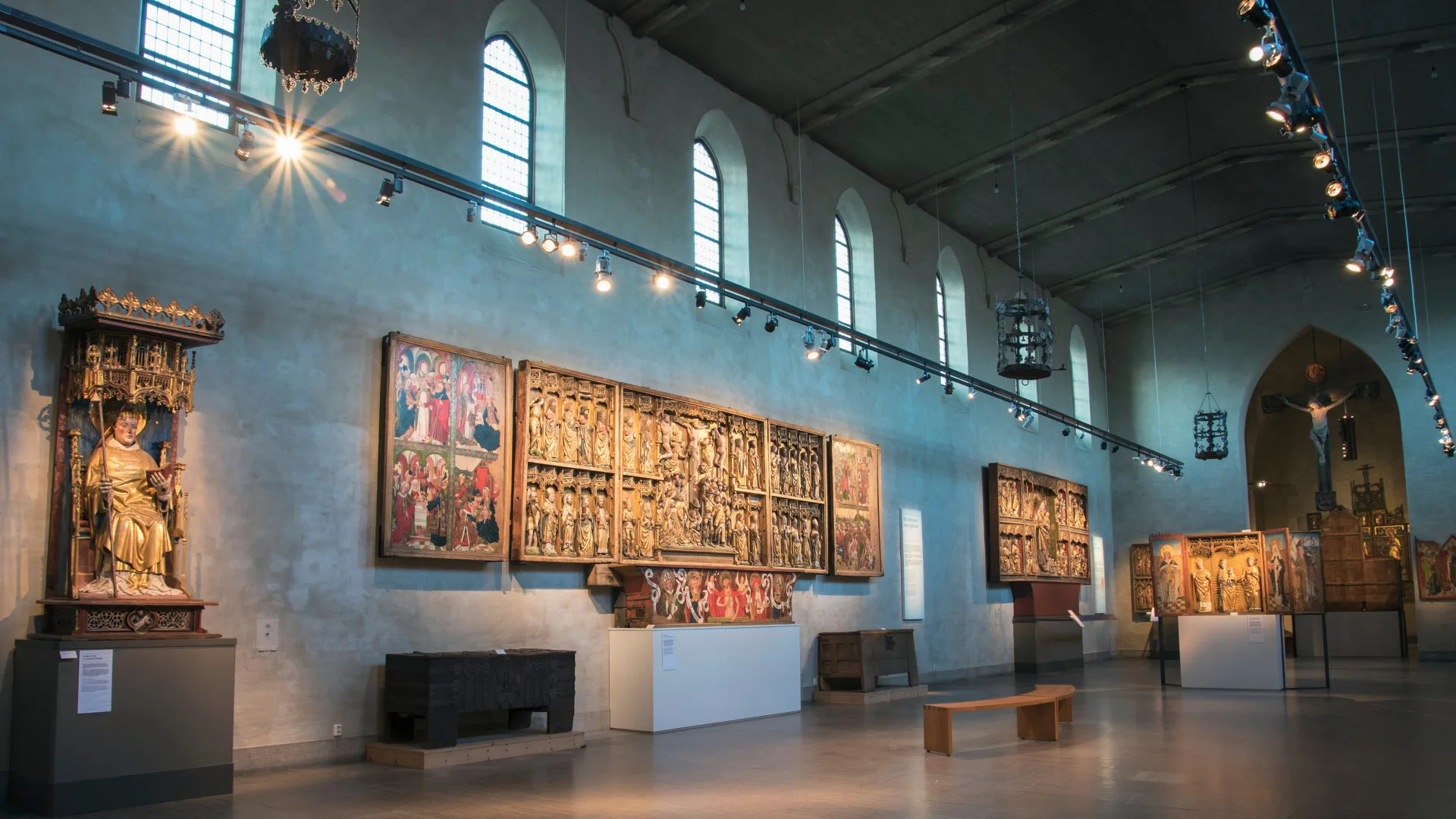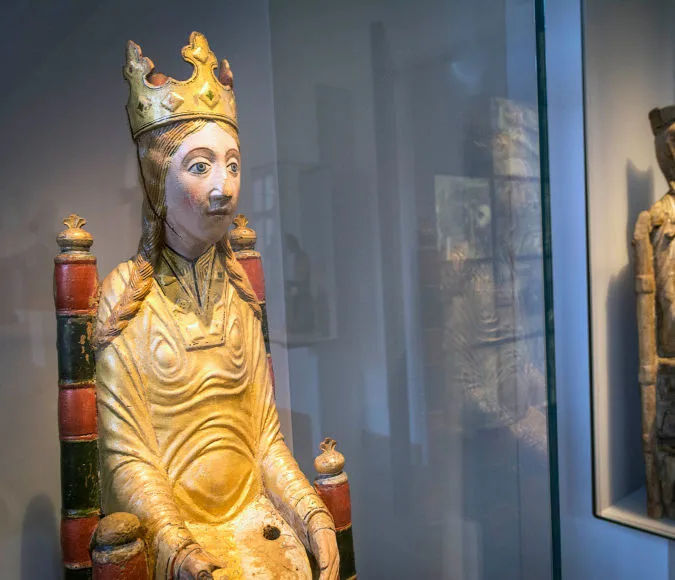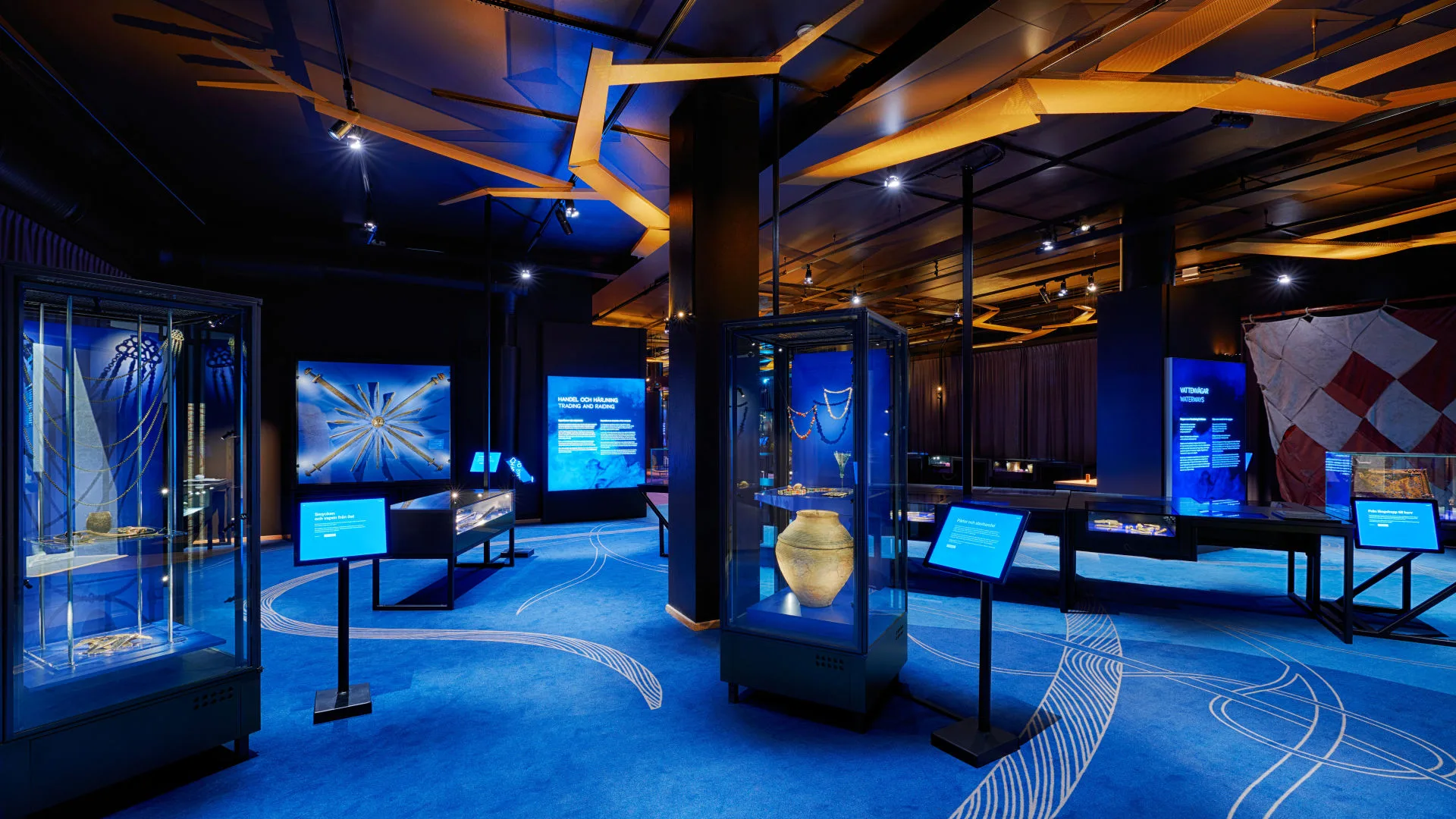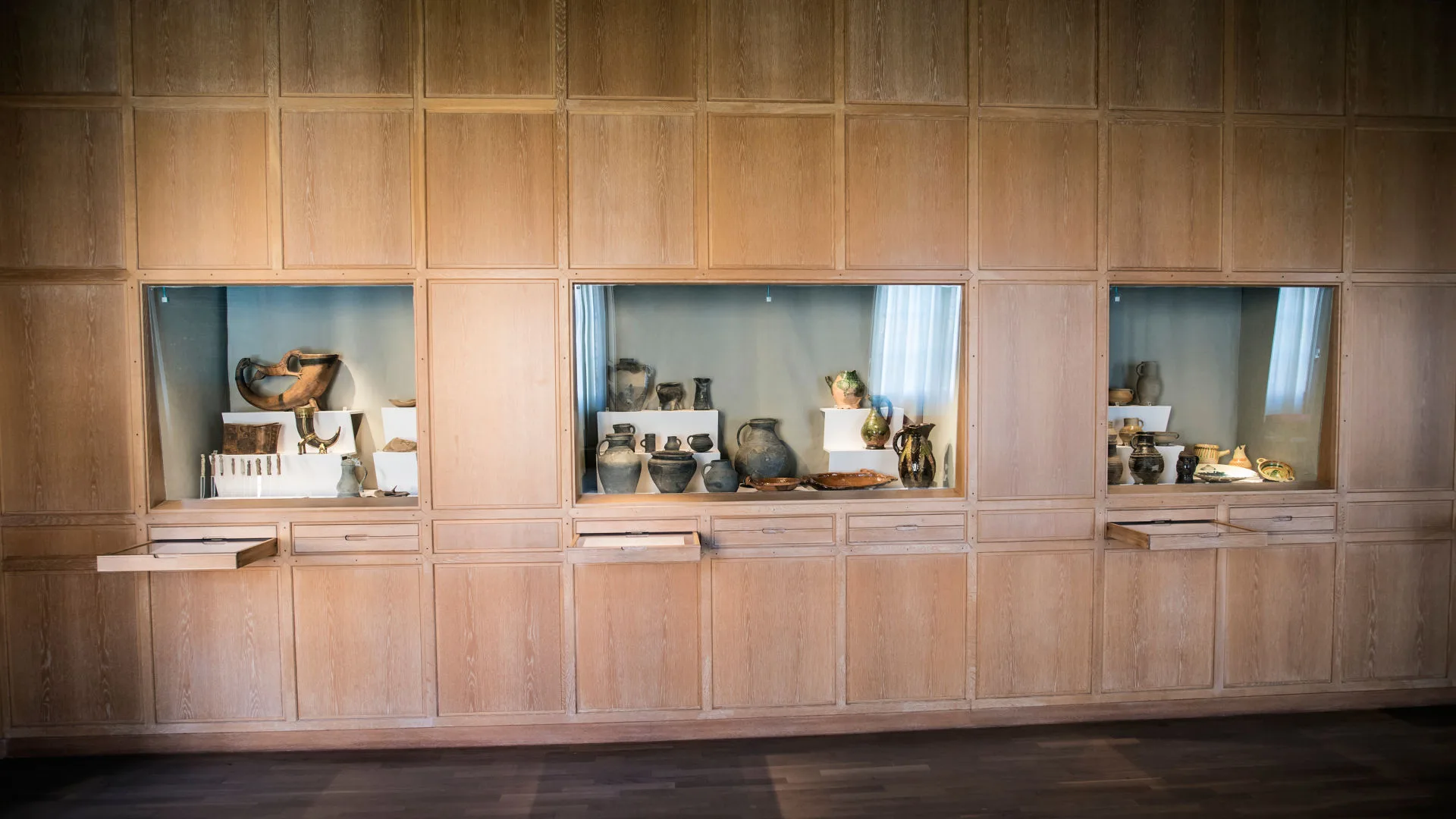
Medieval Life
Religion set the rhythm of the year, permeated people’s lives on weekdays and holidays (holy days), and gave life meaning. The exhibition objects show us traces of domestic chores, things people wore and how people amused themselves during the Middle Ages.
Preserved jugs and jars, pots and frying pans show what could be found in a medieval kitchen. The ceramics on display come from Kalmar, one of the most important trading towns of the Middle Ages. The town had a large German population, and most of the ceramics originate from German regions. Personal eating utensils were uncommon and belonged to the wealthier members of society. The fine bone knife handles in the exhibition are shaped like bagpipers and other figures.
Society as a game of chess
Games have been a source of entertainment since prehistoric times, and various board games were popular. Chess reached Scandinavia in the late 12th century from the Muslim world; in the exhibition you can see chess pieces made of bone and walrus ivory. The game of chess is sometimes compared to medieval society as a whole – the different pieces had different power and strength, much like the various social classes.
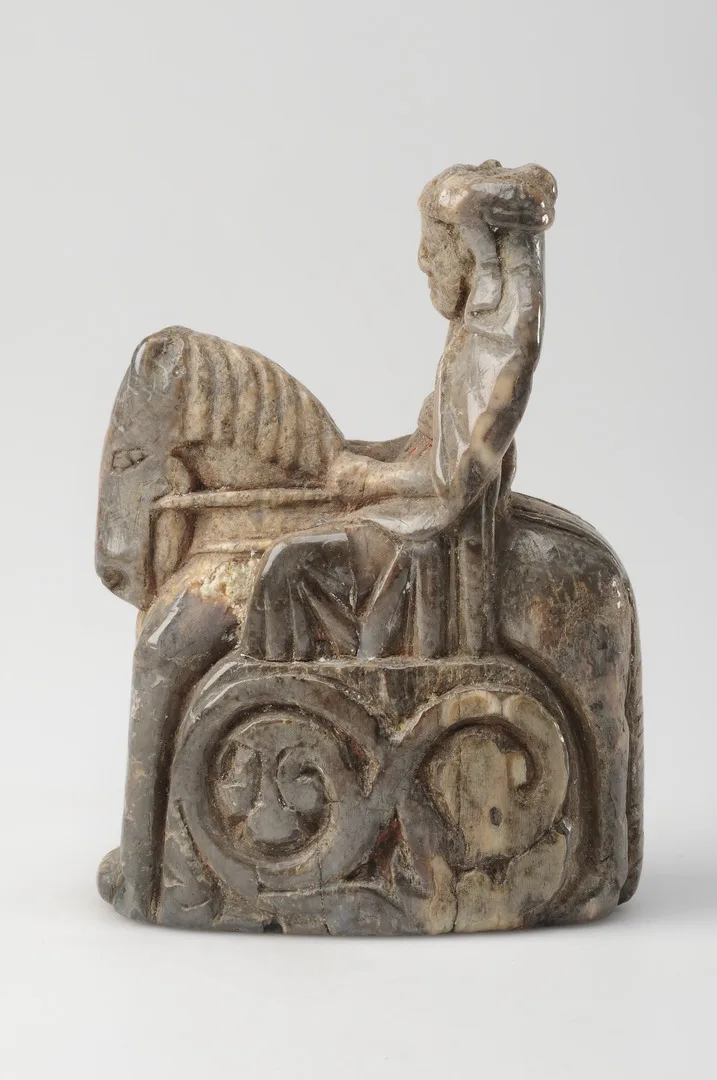
Chess piece Queen
On view at Historiska museet in the exhibition Medeltida liv
Pilgrimages, journeys to sacred places where the relics of saints were kept, were also part of medieval life. The oldest stories of Scandinavians embarking on pilgrimages are found on rune stones from the 11th century. One of the destinations was Jerusalem. Other sites were closer, such as the reilcs of Saint Bridget (Birgitta) in Vadstena and the tomb of Saint Olaf in Nidaros Cathedral in present-day Trondheim. These two places became among the most important pilgrimage destinations in the Nordic region.
As a sign of having visited a holy site, one could buy a pilgrim badge. The badge from Vadstena is among the most common found in Sweden. In the exhibition you can see sculptures of Saint Bridget, Saint Olaf, Saint Sebastian and the apostle James. The exhibition also includes pilgrim badges from several different places.
Jerusalem in the middle of the world
The exhibition features a reproduction of a medieval map made around AD 1300. Through it, we get an understanding of what the world looked like to Europeans in the Middle Ages. Jerusalem is in the middle, as the geographic and religious centre of the earth. It is surrounded by Asia, Africa and Europe. The original map came from Ebstorf in Germany and was destroyed during the Second World War.
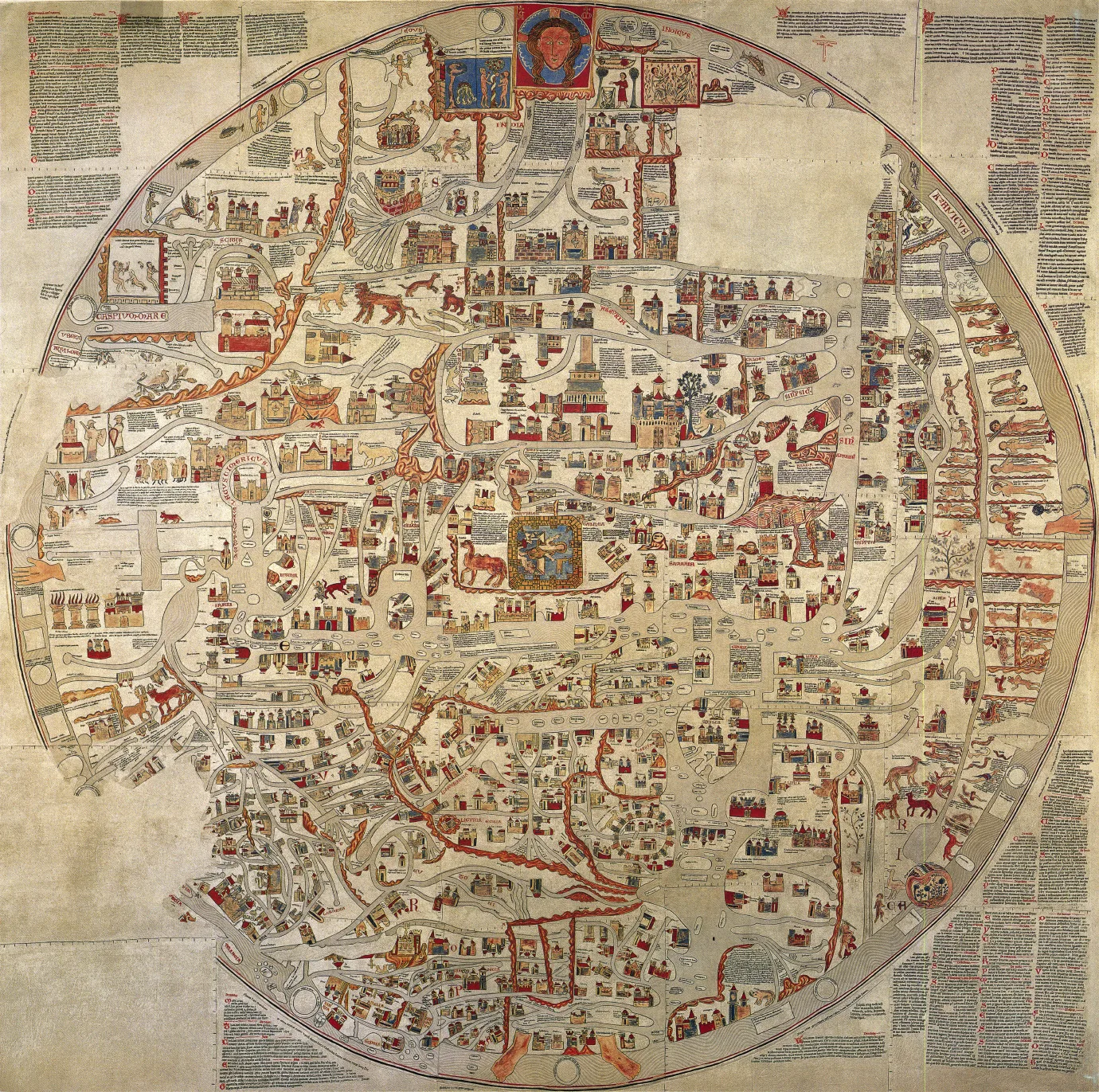
At the centre of the exhibition is a gilded reliquary shaped like a building and with enamel decoration. It derives from a church in Uppland but was made in central Europe in the early years of the 13th century.

Reliquary
On view at Historiska museet in the exhibition Medeltida liv
The church became the natural meeting place on all holy days, and during mass medieval visitors encountered a splendour they rarely experienced elsewhere. You can see crucifixes, incense burners, anointing vessels, and wine and water jugs (aquamaniles). The water jugs are often shaped like animals, inspired by oriental models. The lids of the incense burners have an architectural form, symbolically representing Jerusalem. The consecrated bread was kept in ciboria. The handbell was used to ring at different moments during the service. One displayed in the exhibition comes from Appuna Old Church in Östergötland and bears a runic inscription.
One of Sweden's oldest books
Here you can also see one of Sweden’s oldest preserved books, containing mass texts for Advent from Vallentuna Church in Uppland. It is dated to the year 1198.

Book
On view at Historiska museet in the exhibition Medeltida liv
Medieval crucifixes and furniture
The colourful enamel crucifixes in the exhibition come from churches in Bohuslän, Närke and Småland. The crosses are made of oak, covered with gilded copper and set with small pieces of coloured glass paste. The figures themselves – Jesus, the Virgin Mary and the apostles – are modelled in copper, gilded and enamelled. They were made in Limoges, France, in the late 12th century. The city was famous for its enamel work, and objects from there are found all over Europe. The crucifixes were used in processions.
The medieval furniture in the exhibition comes from churches and monasteries but could also have been found in a wealthy household. The chests once belonged to Saint Bridget’s foundation in Vadstena Abbey. Perhaps one of the noblewomen who entered the convent brought them with her.
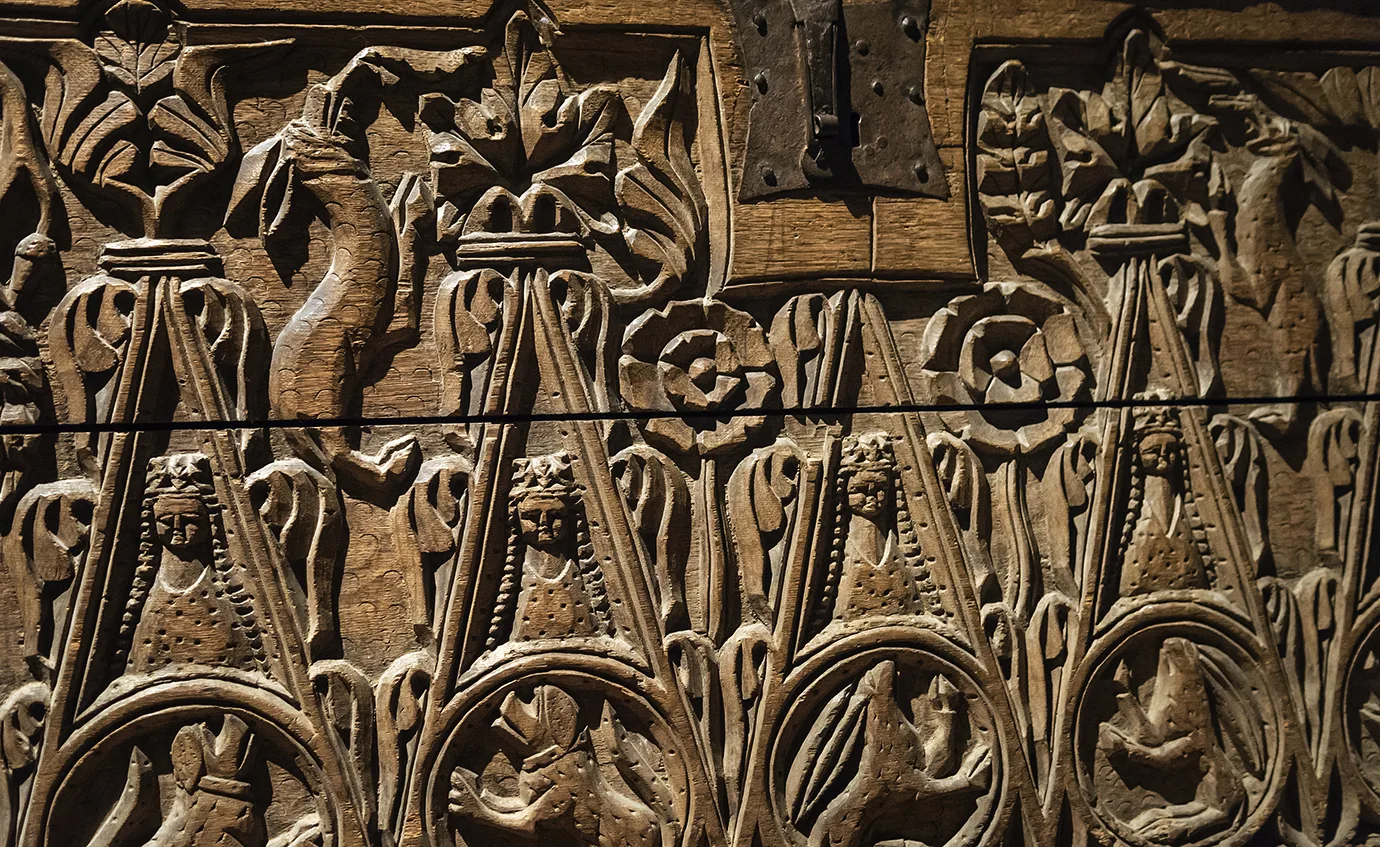
The gallery where the exhibition is displayed was built in the late 1940s, a few years after the museum opened. We have chosen to preserve the interior, which is typical of its time, made by the carpentry workshop of the department store Nordiska Kompaniet (NK).

